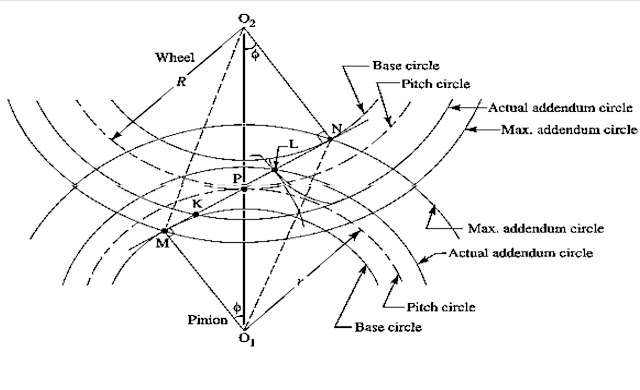Machine Design
Gear Drive
Interference in Involute gear
Introduction:The phenomenon when the tip of a tooth undercuts the root on its mating gear is known as interference.
Interference in involute gears
- MN is the common tangent to the base circles and KL is the path of contact between the two mating teeth.
- If the radius of the addendum circle of pinion is increased to O1N, the point of contact L will move from L to N. When this radius is further increased, the point of contact L will be on the inside of base circle of wheel and not on the involute profile of tooth on wheel.
- The tip of tooth on the pinion will then undercut the tooth on the wheel at the root and remove part of the involute profile of tooth on the wheel. This effect is known as interference and occurs when the teeth are being cut.
- In brief, the phenomenon when the tip of a tooth undercuts the root on its mating gear is known as interference. Similarly, if the radius of the addendum circle of the wheel increases beyond O2M, then the tip of tooth on wheel will cause interference with the tooth on pinion.
- The points M and N are called interference points. Obviously interference may be avoided if the path of contact does not extend beyond interference points.
- The limiting value of the radius of the addendum circle of the pinion is O1N and of the wheel is O2M.
- The interference may only be avoided, if the point of contact between the two teeth is always on the involute profiles of both the teeth. In other words, interference may only be prevented, if the addendum circles of the two mating gears cut the common tangent to the base circles between the points of tangency.
Note :
In order to avoid interference, the limiting value of the radius of the addendum circle of the pinion (O1 N) and of the wheel (O2 M), may be obtained as follows





No comments:
Post a Comment